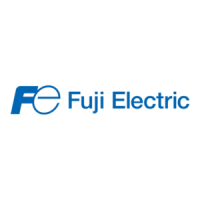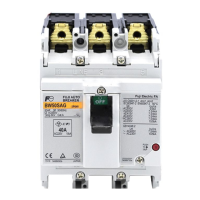Do you have a question about the Fuji Electric EW50AAG and is the answer not in the manual?
Overview of common low-voltage circuit faults and protection needs.
Details on protecting circuits from overcurrent faults like overload and short-circuit.
Explanation of protection against phase-loss faults in electrical circuits.
Explains different types of overcurrent tripping behavior in MCCBs.
Details the performance of MCCBs during short-circuit current interruption.
Covers performance aspects during overload switching tests.
Discusses temperature rise and power consumption at 100% current.
Outlines switching and trip switching durability specifications.
Details power frequency and impulse withstand voltages.
Lists key factors and considerations for selecting MCCBs for various applications.
Explains cascade (backup) trip coordination between protective devices.
Details selective trip coordination for improved system reliability.
Covers methods for protecting electrical wiring from overcurrents.
Discusses MCCB selection and protection for motor circuits.
Explains MCCB selection for transformer primary side circuits.
Addresses MCCB selection and considerations for welder circuits.
Guides MCCB selection for phase advance capacitor circuits.
Details MCCB selection and application for DC circuits.
Explains grounding methods and ground fault protection in systems.
Lists standard ambient and environmental conditions for MCCB use.
Discusses MCCB application in challenging environments like high humidity or corrosive atmospheres.
Covers important precautions for MCCB wiring and connection.
Addresses potential MCCB malfunctions due to transient inrush currents.
Identifies common MCCB faults and their potential causes.
Outlines procedures for initial, periodic, and post-trip MCCB inspections.
Provides guidelines for MCCB replacement based on deterioration and durability.
Details the process and formulas for calculating short-circuit current.
| Poles | 3 |
|---|---|
| Rated Current (A) | 50 |
| Rated Voltage (V) | 690 |
| Trip Characteristic | Thermal Magnetic |
| Mounting Type | Fixed |










